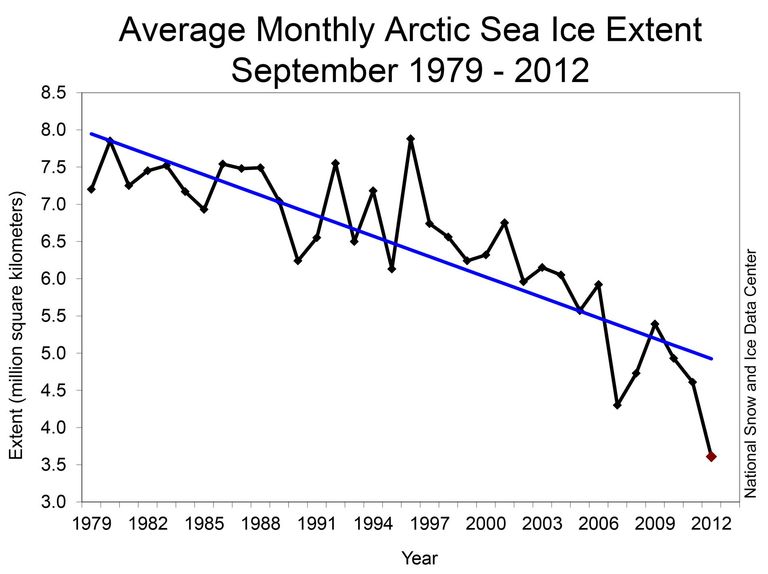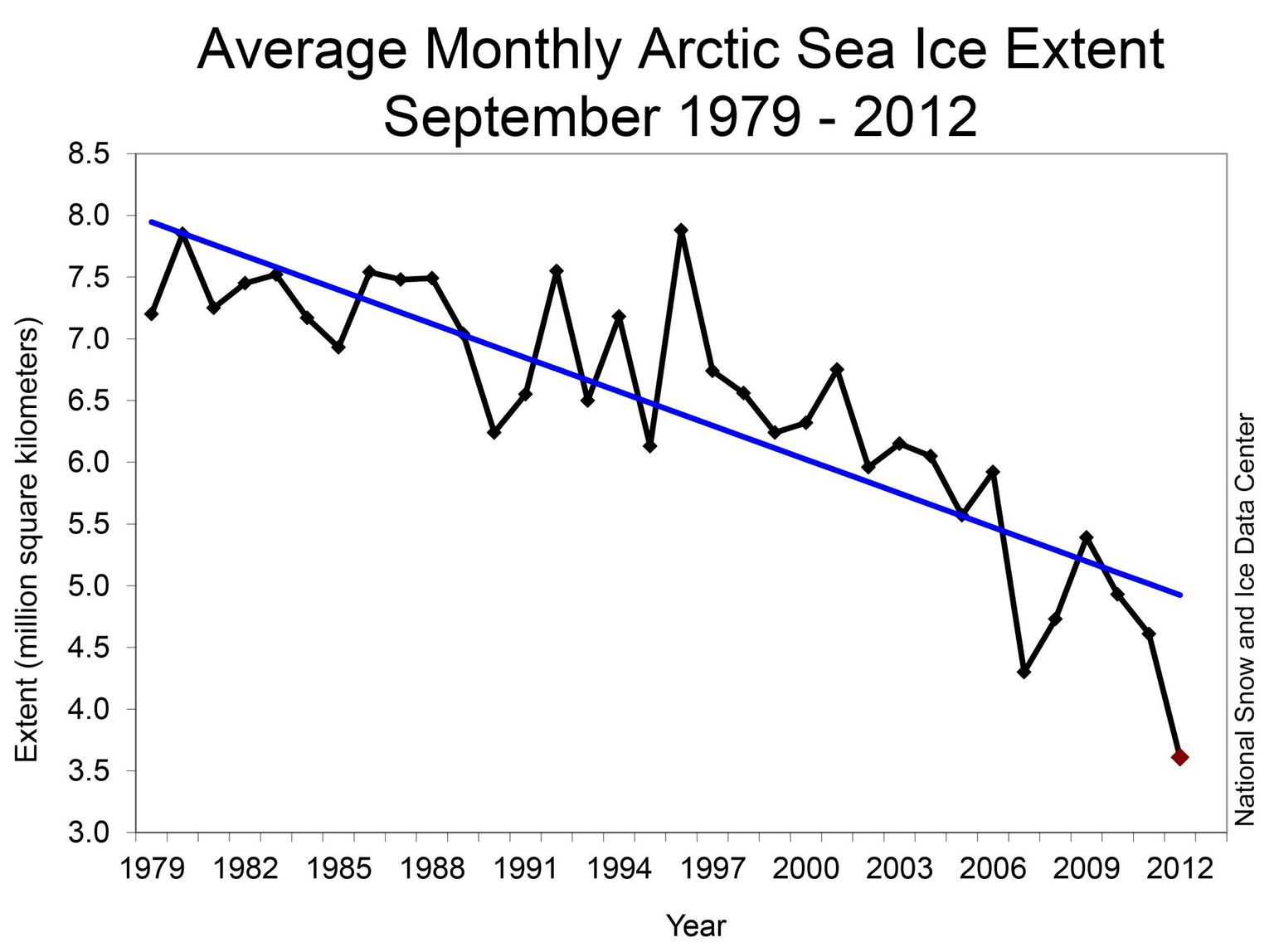Arctic Sea Ice: Record Minimum in 2012
Arctic sea ice extent averaged for September 2012 was the lowest in the satellite record, and was 16 % lower than the previous low for the month, which occurred in 2007. Through 2012, the linear rate of decline for September Arctic ice extent over the satellite record is now 13 % per decade, relative to the 1979 to 2000 average.

The six lowest September ice extents over the satellite record have all occurred in the last six years. Compared to the 1979 to 2000 average ice conditions, the September 2012 ice cover represents a 49 % reduction in the area of the Arctic Ocean covered by sea ice. It is 2.91 million square kilometers, or 45 %, below the 30-year average over 1981 to 2010.
Following the record minimum that was set on September 16, 2012, Arctic sea ice has started its seasonal pattern of growth; maximum seasonal extent is expected to be reached by the end of March of next year.
Graphs:
> Arctic sea ice extent for September 2012
> Average Monthly Arctic Sea Ice Extent September 1979-2012
Source and further information:


